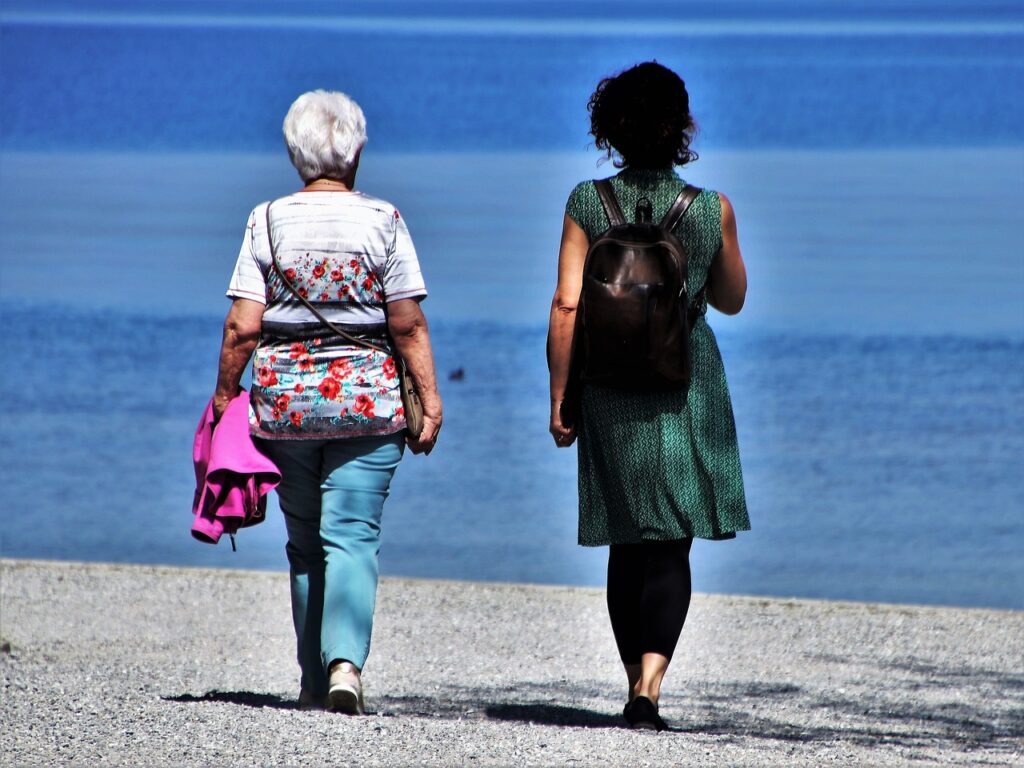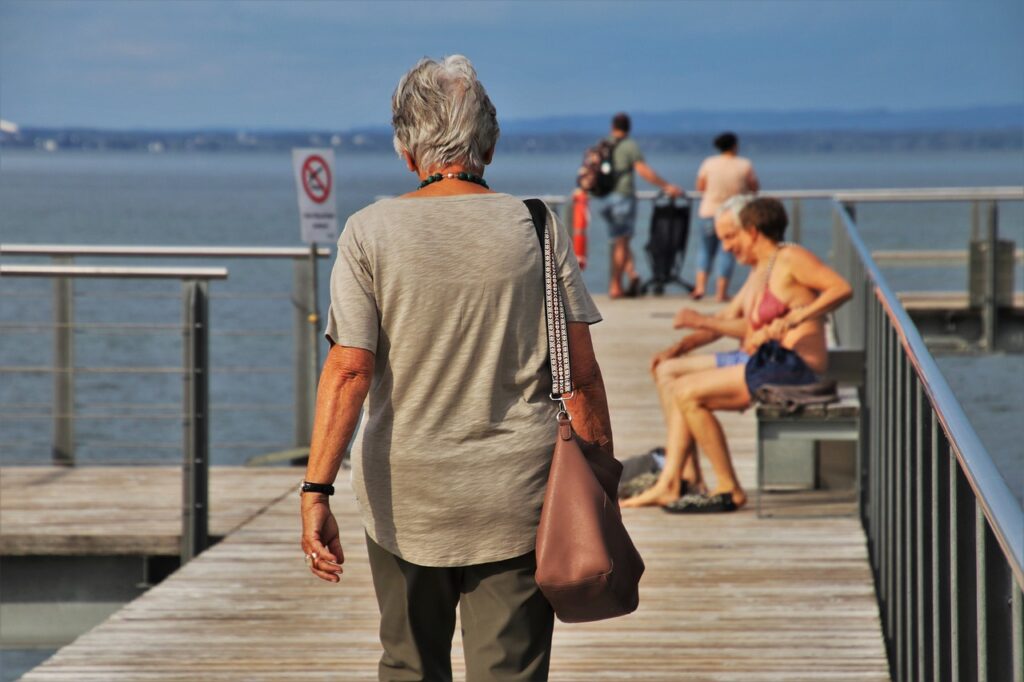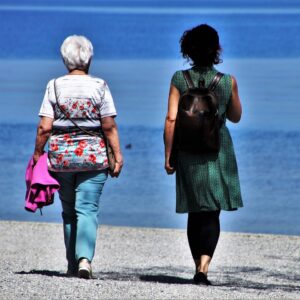Are you a senior looking for ways to cope with chronic pain? Look no further because mindfulness techniques may be the answer you’ve been searching for. As we age, it’s common to experience various forms of pain, whether it’s from arthritis, injury, or other ailments. However, by incorporating mindfulness techniques into your daily routine, you can effectively manage and reduce pain levels. This article will explore the benefits of mindfulness and provide practical tips for seniors to incorporate these techniques into their lives. So, if you’re ready to find relief and improve your well-being, let’s dive into the world of mindfulness!
Practicing Mindfulness
Mindfulness is a powerful practice that can greatly benefit seniors by helping them cope with pain and improve their overall well-being. By cultivating a state of present moment awareness, seniors can develop a greater sense of peace and acceptance, and improve their ability to manage and reduce pain. In this article, we will explore various mindfulness techniques that seniors can incorporate into their daily lives to find relief from pain and enhance their quality of life.

This image is property of pixabay.com.
Understanding Mindfulness
At its core, mindfulness is the practice of bringing one’s attention to the present moment without judgment. It involves paying deliberate and non-reactive attention to one’s thoughts, feelings, and physical sensations. Mindfulness allows individuals to step away from the worries of the past and the anxieties of the future, and instead focus on the here and now. By practicing mindfulness, seniors can develop a deeper understanding of their pain and learn to respond to it with kindness and compassion.
Benefits of Mindfulness for Seniors
Mindfulness has been shown to offer a wide range of benefits for seniors, particularly when it comes to managing pain. By actively engaging in mindfulness practices, seniors can experience:
- Reduced stress and anxiety: Mindfulness helps seniors develop a more relaxed and calm state of mind, reducing the impact of stress and anxiety on their physical and mental well-being.
- Improved pain management: By cultivating present moment awareness and accepting their pain without judgment, seniors can develop a greater sense of control over their pain and reduce its intensity.
- Enhanced emotional well-being: Mindfulness allows seniors to develop a more positive outlook on life and cultivate a greater sense of happiness and contentment.
- Improved cognitive function: Regular mindfulness practice has been shown to enhance attention, memory, and overall cognitive function in seniors.
- Better sleep quality: Mindfulness techniques can help seniors relax and unwind, promoting better sleep and overall sleep quality.
Mindful Breathing
One of the simplest and most accessible mindfulness techniques for seniors is mindful breathing. By bringing attention to the breath, seniors can cultivate a sense of calm and relaxation, while also increasing their awareness of the present moment.
Deep Breathing Exercises
Deep breathing exercises are a powerful way to calm the mind and relax the body. Seniors can practice deep breathing by finding a comfortable seated position and closing their eyes. Taking a slow, deep breath in through the nose, filling the lungs completely, and then exhaling slowly through the mouth. By focusing on the breath and its rhythm, seniors can bring their attention to the present moment and let go of any tension or stress.
Body Scan Meditation
Another effective mindfulness practice for seniors is body scan meditation. This technique involves systematically bringing attention to different parts of the body, starting from the top of the head and moving down to the toes. Seniors can do this by lying down in a comfortable position and bringing their awareness to each body part, noticing any sensations or tension they may be feeling. By consciously relaxing each area of the body, seniors can release tension and promote a sense of relaxation and well-being.
Guided Imagery
Guided imagery is a mindfulness technique that involves using mental images to evoke a sense of calm and relaxation. Seniors can use this technique to distract their minds from pain and focus on pleasant and calming images.
Visualizing a Calm and Relaxing Place
Seniors can practice guided imagery by closing their eyes and imagining themselves in a calm and relaxing place. This could be a peaceful beach, a serene garden, or any other setting that brings about feelings of tranquility. By vividly imagining the sights, sounds, and smells of this place, seniors can transport themselves mentally and find temporary relief from pain and stress.
Creating Mental Images to Distract from Pain
In addition to visualizing calming places, seniors can also create mental images to distract themselves from pain. This can involve imagining engaging in an enjoyable activity, spending time with loved ones, or achieving a personal goal. By focusing on these positive mental images, seniors can shift their attention away from pain and cultivate a more positive mindset.

This image is property of pixabay.com.
Meditation Techniques
Meditation is a powerful mindfulness practice that can greatly benefit seniors in managing pain and promoting overall well-being. There are several different meditation techniques that seniors can explore and incorporate into their daily routines.
Focused Attention Meditation
Focused attention meditation involves bringing one’s attention to a single point of focus, such as the breath or a specific sensation. Seniors can practice this technique by finding a comfortable seated position and redirecting their attention to the chosen focal point whenever their mind starts to wander. With regular practice, seniors can improve their ability to sustain focus and develop a greater sense of calm and clarity.
Loving-Kindness Meditation
Loving-kindness meditation is a practice that involves cultivating feelings of love, compassion, and kindness towards oneself and others. Seniors can engage in loving-kindness meditation by silently repeating phrases such as “May I be happy, may I be healthy, may I live with ease” or “May all beings be happy, may all beings be healthy, may all beings live with ease”. By directing positive thoughts and well-wishes towards themselves and others, seniors can foster a sense of connectedness and enhance their emotional well-being.
Progressive Muscle Relaxation
Progressive muscle relaxation is a technique that involves systematically tensing and relaxing different muscle groups in the body to promote relaxation and reduce tension. Seniors can practice progressive muscle relaxation to alleviate pain and achieve a state of deep physical and mental relaxation.
Step-by-Step Instructions
Seniors can begin progressive muscle relaxation by finding a comfortable position, either sitting or lying down. Starting with the toes, seniors can consciously tense the muscles in that area for a few seconds before slowly releasing the tension and allowing the muscles to relax completely. They can then move on to the next muscle group, such as the calves, thighs, abdomen, and so on. By progressively moving through each group of muscles, seniors can release tension throughout their bodies and experience a deep sense of relaxation.
Benefits of Progressive Muscle Relaxation
Progressive muscle relaxation not only helps seniors reduce muscle tension, but it also promotes better pain management and overall well-being. By regularly practicing this technique, seniors can improve their body awareness and develop the ability to relax their muscles at will, leading to increased comfort and a greater sense of control over their pain.
Yoga for Pain Management
Yoga is a holistic practice that combines physical postures, breathing exercises, and meditation to promote overall well-being. Seniors can use yoga as a gentle and effective way to manage pain and enhance their physical and mental health.
Gentle Yoga Poses for Seniors
Seniors can begin their yoga practice with gentle poses that focus on stretching and strengthening the body. Some suitable poses include:
- Mountain pose: Stand with feet hip-width apart, grounding the feet firmly into the floor and lifting the crown of the head towards the ceiling.
- Cat-cow pose: Start on all fours, inhale and arch the back, looking up towards the ceiling (cow pose), then exhale and round the spine, looking towards the belly button (cat pose).
- Child’s pose: From a kneeling position, bring the hips back towards the heels and extend the arms forward, resting the forehead on the mat.
By practicing these gentle poses and paying attention to the breath, seniors can improve flexibility, strength, and balance while also finding relief from pain.
Chair Yoga and Modifications
For seniors who have limited mobility or difficulty getting down on the floor, chair yoga is a great alternative. Chair yoga involves modifying traditional yoga poses so that they can be done while seated or holding onto a chair for support. This allows seniors to still enjoy the benefits of yoga and alleviate pain, even if they have physical limitations. With the help of a qualified yoga instructor, seniors can learn modified poses that promote flexibility, strength, and relaxation from the comfort of a chair.
Tai Chi and Qigong
Tai Chi and Qigong are gentle movement practices that combine slow, flowing movements with deep breathing and mindfulness. These practices can greatly benefit seniors by promoting relaxation, relieving pain, and improving balance and flexibility.
Slow and Gentle Movements to Reduce Pain
Tai Chi and Qigong involve slow and gentle movements that can help seniors reduce pain and improve their physical well-being. The flowing movements of Tai Chi and Qigong gently stretch and strengthen the body, releasing tension and promoting relaxation. By engaging in these practices regularly, seniors can increase their body awareness, improve their posture, and reduce pain.
Improving Balance and Flexibility
One of the key benefits of Tai Chi and Qigong for seniors is the improvement in balance and flexibility. The slow and deliberate movements in these practices help seniors develop better proprioception and body control, reducing the risk of falls and injuries. Additionally, the stretching and gentle movements can help improve joint mobility and flexibility, enhancing overall physical well-being.
Mind-Body Techniques
In addition to mindfulness practices, there are several mind-body techniques that seniors can explore to cope with pain and promote their overall well-being.
Acupuncture and Acupressure
Acupuncture and acupressure are ancient practices rooted in Traditional Chinese Medicine that involve stimulating specific points on the body to promote healing and relieve pain. Seniors can seek the help of trained practitioners to receive acupuncture treatments or learn acupressure techniques that they can perform themselves. These practices work by balancing the body’s energy flow and can be effective in reducing pain and promoting relaxation.
Massage Therapy
Massage therapy is another mind-body technique that can greatly benefit seniors in managing pain. Skilled massage therapists can use various techniques, such as Swedish massage or deep tissue massage, to release tension, improve circulation, and alleviate pain. Seniors can receive regular massages to promote relaxation, reduce muscle stiffness, and experience relief from pain. It’s important to consult with a healthcare professional before starting any massage therapy to ensure it is safe and appropriate for individual needs.
Mindful Eating
Mindful eating involves paying deliberate attention to the sensations, thoughts, and emotions that arise while eating. By practicing mindful eating, seniors can cultivate a healthier relationship with food, enhance their digestion, and improve their overall well-being.
Connecting with the Senses During Meals
Seniors can begin practicing mindful eating by bringing their awareness to the sensory experience of eating. This includes paying attention to the smell, taste, texture, and appearance of the food. By consciously engaging with the senses, seniors can savor each bite and derive greater satisfaction from their meals.
Chewing Slowly and Savoring Each Bite
Another key aspect of mindful eating is chewing slowly and thoroughly. By chewing each bite mindfully, seniors can improve digestion, reduce bloating, and enhance the enjoyment of their meals. Taking the time to savor each bite also allows seniors to tune into their body’s cues of hunger and fullness, preventing overeating and promoting a healthier relationship with food.
Managing Negative Thoughts and Emotions
Negative thoughts and emotions can greatly impact a senior’s overall well-being and make pain more challenging to manage. By developing strategies to recognize and manage negative patterns, seniors can foster a more positive mindset and enhance their emotional well-being.
Recognizing Negative Patterns
The first step in managing negative thoughts and emotions is to develop an awareness of their presence. Seniors can practice paying attention to the thoughts that arise in response to pain and identify any negative patterns or beliefs that may be perpetuating their suffering. By recognizing these patterns, seniors can consciously choose to reframe their thoughts and cultivate a more positive outlook.
Cultivating a Positive Mindset
Once negative patterns are recognized, seniors can work on cultivating a positive mindset by reframing negative thoughts and focusing on the present moment. This can involve practicing gratitude, focusing on positive aspects of life, and engaging in activities that bring joy and fulfillment. By consciously nurturing a positive mindset, seniors can increase their resilience, improve their emotional well-being, and better manage pain.
In conclusion, practicing mindfulness can be a game-changer for seniors looking to cope with pain and enhance their overall well-being. Through techniques such as mindful breathing, guided imagery, meditation, progressive muscle relaxation, yoga, Tai Chi and Qigong, mind-body techniques, mindful eating, and managing negative thoughts and emotions, seniors can find relief from pain and cultivate a greater sense of peace and well-being. It’s important to remember that mindfulness is a skill that requires regular practice and patience. By incorporating these techniques into their daily lives, seniors can embark on a journey towards greater pain management and a more fulfilling life.
